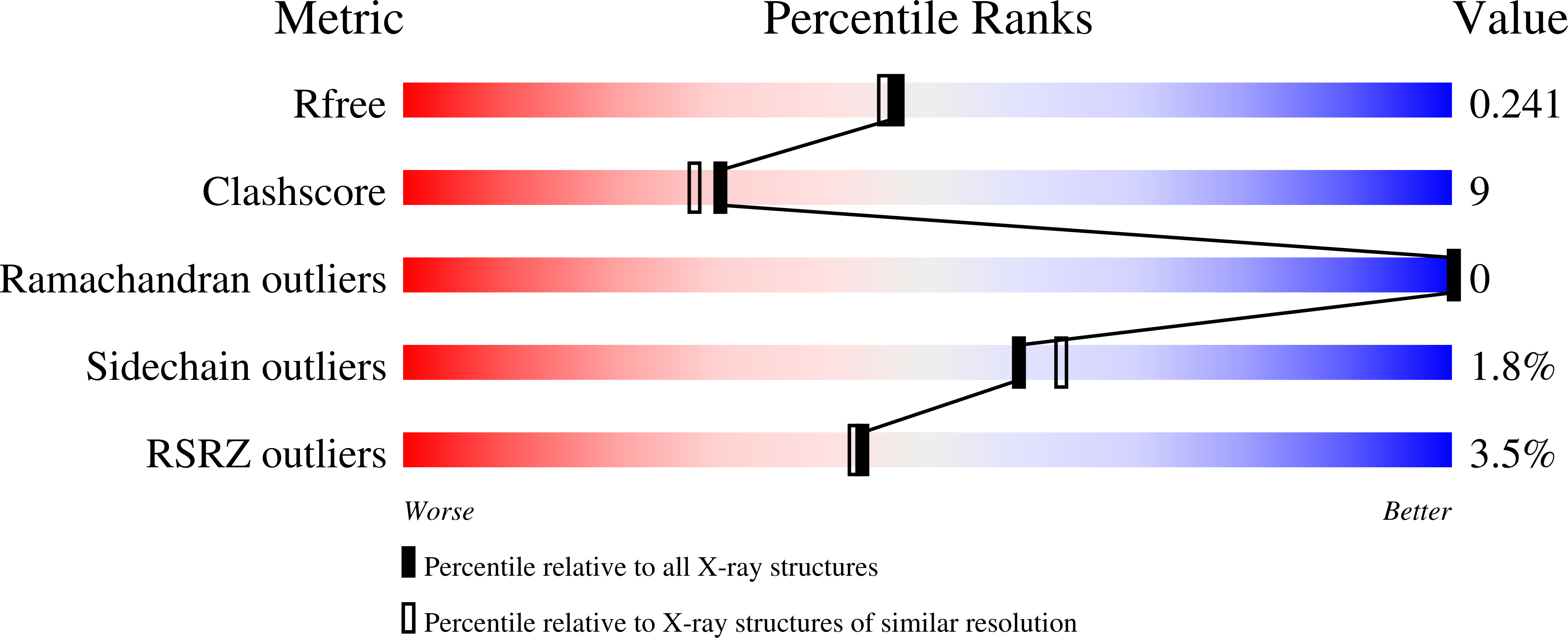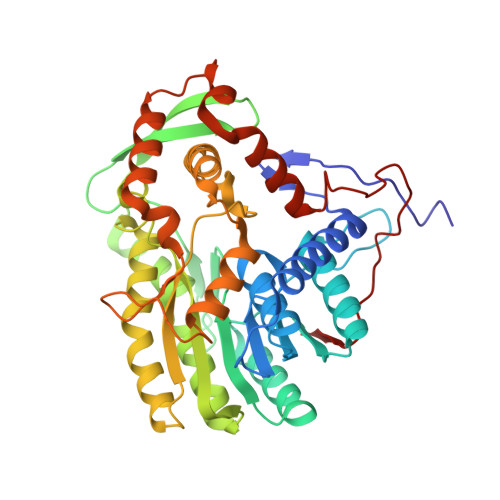Structure of the Yersinia Pestis Fabv Enoyl-Acp Reductase and its Interaction with Two 2-Pyridone Inhibitors
Hirschbeck, M.W., Kuper, J., Lu, H., Liu, N., Neckles, C., Shah, S., Wagner, S., Sotriffer, C.A., Tonge, P.J., Kisker, C.(2012) Structure 20: 89
- PubMed: 22244758
- DOI: https://doi.org/10.1016/j.str.2011.07.019
- Primary Citation of Related Structures:
3ZU2, 3ZU3, 3ZU4, 3ZU5 - PubMed Abstract:
The recently discovered FabV enoyl-ACP reductase, which catalyzes the last step of the bacterial fatty acid biosynthesis (FAS-II) pathway, is a promising but unexploited drug target against the reemerging pathogen Yersinia pestis. The structure of Y. pestis FabV in complex with its cofactor reveals that the enzyme features the common architecture of the short-chain dehydrogenase reductase superfamily, but contains additional structural elements that are mostly folded around the usually flexible substrate-binding loop, thereby stabilizing it in a very tight conformation that seals the active site. The structures of FabV in complex with NADH and two newly developed 2-pyridone inhibitors provide insights for the development of new lead compounds, and suggest a mechanism by which the substrate-binding loop opens to admit the inhibitor, a motion that could also be coupled to the interaction of FabV with the acyl-carrier protein substrate.
Organizational Affiliation:
Rudolf Virchow Center for Experimental Biomedicine, Institute for Structural Biology, Josef-Schneider-Strasse 2, University of Würzburg, D-97080 Würzburg, Germany.

















